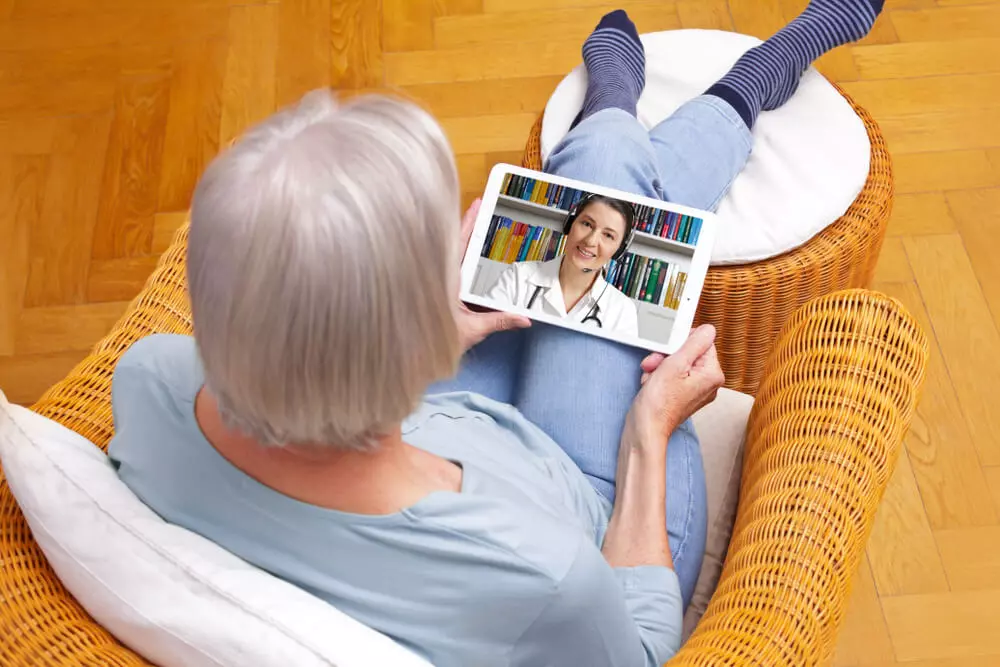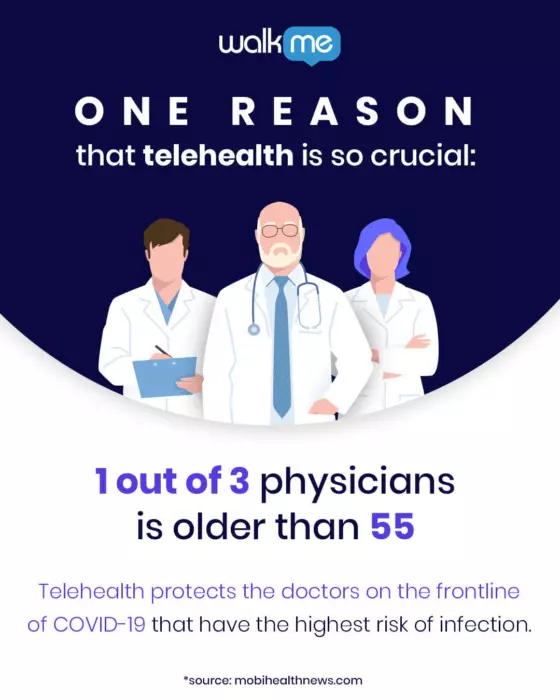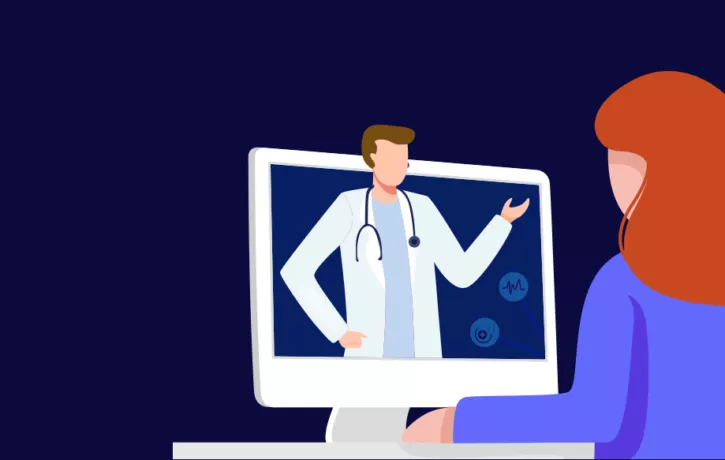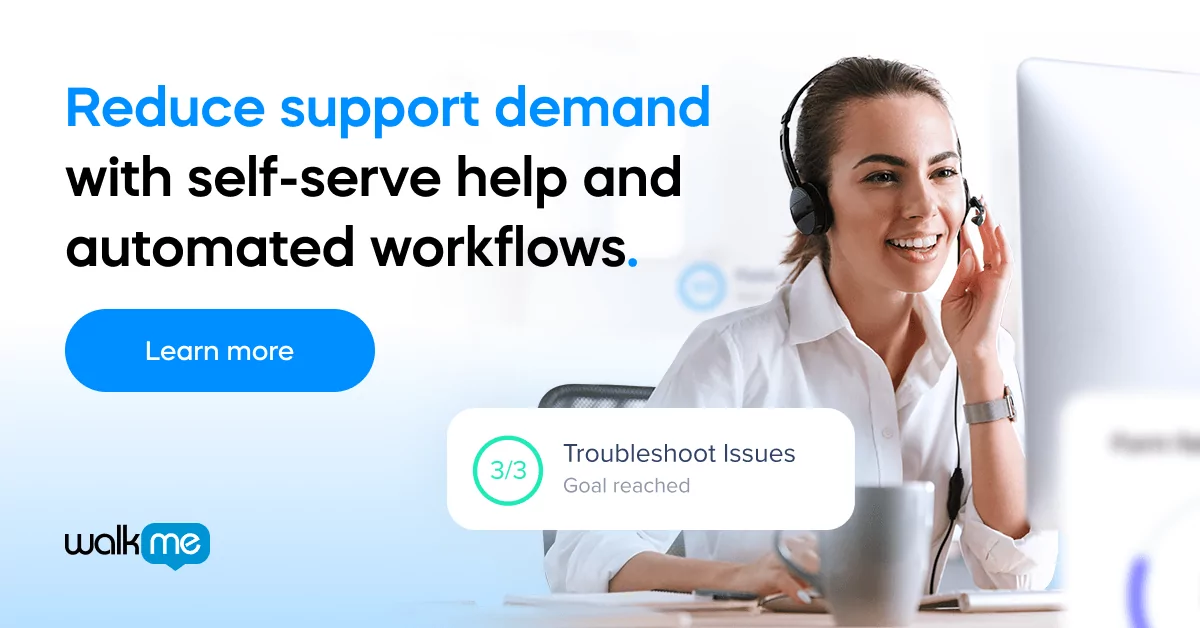It’s always a challenge when service providers introduce change to users.
Think about when you see that an app on your phone needs to be updated. Even though you know from experience, that updating the app will make it better, you still don’t want to do it. The momentary discomfort of something new and unfamiliar, especially if it means a delay in your tech process, is a major deterrent for trying something different.
Medicine, in particular, is an industry and field that has been trying to offer more digital solutions, but traditionally was met with a lot of resistance. Despite there already being an extensive array of digital options for telehealth services, less than 20% of the population had ever used telehealth previous to COVID19. Now that social distancing restrictions have forced patients and practitioners to accept telehealth solutions, the face of medicine has dramatically changed.
What is telehealth?
Telehealth describes remote health services and processes through digital means. This is a very broad term and encompasses a wide variety of services, both clinical (diagnosing, drug prescription, etc) and non-clinical (making appointments, accessing medical records, paying health bills). Telemedicine is the term for remote clinical care services specifically.

Popular telehealth services:
- Practitioner clinical care
- Prescribing medications
- Remote/robotic surgery
- Mental health care
- Medical advice
- Appointment or care reminders
- Monitoring of symptoms
- Training and supervision for practitioners
- Administrative work, billing, payment and data entry
- Gathering of health data, research, and analysis (Electronic Health Record systems)
- Medical studies and academia content management
- Healthcare system management and integration
There are many benefits for both practitioners and patients to having more digital options for healthcare services. But until COVID19, most people chose less efficient options if it allowed them to see a doctor in person, and continue to engage with medicine in the traditional way. It wasn’t until March 2020 that this changed.
According to research from Frost and Sullivan, telehealth visits increased by 50% in March 2020. Suddenly, people weren’t able to decline a video appointment and have an in-person visit instead.
Companies like PlushCare say that appointments are up by 70% and eConsult went from 300 to 3,000 digital consultations every hour.
With an unprecedented level of new-users, both practitioners and patients alike, these digital capabilities and support systems need to be technologically equipped to handle the influx.
What can a Digital Adoption Platform do for telehealth?
The service-providers of telehealth are insurance companies, hospitals, private practices, and third-party providers. Users of technology from the providers are often doctors, nurses, secretaries, and medical equipment personnel – not necessarily the most digitally-enabled demographic.
Doctors, who are on the frontline of fighting the pandemic, are at serious risk for danger, with 1 in 3 physicians being over the age of 55. So ensuring that medical practitioners can onboard easily, and navigate systems seamlessly, is of the utmost importance.

The staggering amount of new users means that the demand for support is extremely high across telehealth platforms. To illustrate how impactful a DAP can be for these systems, we’d like to share the story of a phenomenal WalkMe customer, Modernizing Medicine, a finalist for the 2020 Realizer Awards in the category of Best Customer Experience.
Modernizing Medicine utilizes WalkMe to deliver more
Why turn to a digital adoption solution?
“Modernizing Medicine was founded on the guiding principle of using technology to improve the lives of physicians, staff, and patients. We accomplish this by focusing on creating efficiencies, innovation and improving patient outcomes. Our challenge was to continue to succeed in our mission while technology advances and user expectations increase. The more systems a medical practice introduces, the more disruption is created, resulting in lost productivity.
Ultimately, this affects patient care and contributes to physician burnout. Our goal with introducing a digital adoption strategy was for our clients to have the ability to use our software to its fullest potential while remaining successful as their businesses grow and our products expand. Investing in WalkMe and other tools geared toward automation provides more self-service, fewer support inquiries, increased feature adoption, and improved operational efficiencies. Implementing a digital adoption strategy was essential in supplementing our great team and culture.”
How the strategy unfolded…
“Our initial strategy was to implement WalkMe into our Practice Management (PM) product, which supported 20,000 users at the end of 2018. When we went live with WalkMe, the content consisted predominantly of general apps, such as WalkThroughs and SmartTips. In 2018, the adoption, engagement, and satisfaction metrics were impressive with 76% of users leveraging the tool, and 96% of those users interacting with WalkMe more than once.
In addition to WalkMe’s native reports for goal completion and failed search terms, we adopted the recommended best practice to incorporate surveys following walkthrough interactions. In 2018, surveys had a 60% response rate, with 72% of users reporting that the content was helpful. The success of WalkMe in PM led us to expand to our flagship product, EMA®, our electronic health record (EHR) system, supported on Web browsers and native mobile applications.
This increased our active user count to 68,000 users in 2019, an increase of 240% year over year.
Despite the massive growth in users, our survey response rate remained stable, with a 55% survey response rate, and 72% of users reporting the content was helpful. We have also leveraged WalkMe’s expansion into mobile, automation, insights, and session playbacks to help take our digital adoption program to the next level.”
The DAP benefit for end-users
“During the design and development process, we completed a series of user experience testing to validate the benefits of WalkMe for our clients. The feedback received during testing coincides with surveys and indirect sentiment from users. Each end-user persona responded with different benefits to WalkMe. With new or inexperienced users, the feedback was that the tool was intuitive, convenient, and allowed them to learn without the fear of being judged by their peers or managers.
Experienced users gained the most benefit from being notified and educated on new functionalities that benefited their role or practice. Finally, with the availability of WalkMe’s automation and Actionbot features, we identified opportunities with enterprise and strategic accounts allowing for streamlined workflows and creating operational efficiencies. Ultimately, it was reported that benefits for each persona results in more time for the practice to focus on patient care.”
The DAP benefit for the team
“The data and tools that the WalkMe advanced features provide helps our Product and Customer Success teams to create an amazing user experience and customer experience (UX and CX) by allowing the teams to review user behavior and automate key processes in our applications.”
Success with DAP impacts all stakeholders
“It may seem unorthodox, but one of the ways that our digital adoption strategy has been successful has come from the emergence of the Digital Adoption Platform as a new category of technology. Champions within our organization have been evangelists for WalkMe before it was as relevant and essential as it is today.
WalkMe and Modernizing Medicine’s goals align with the goal of digital transformation, both within our organization and our clientele in the healthcare industry. Internally, the capabilities of WalkMe have helped spark a change in our Product and Development teams’ approach design, usability, and productivity. WalkMe’s simple content development interface and ability to add complex conditional logic without R&D effort is incredibly beneficial. Our clients’ experiences are positive and thus it helps create customer delight. When a system can dynamically and contextually provide guidance, awareness, and automation, everyone wins.”
A faster, more efficient telehealth is essential
There are many telehealth platforms available and they are extremely powerful and capable tools. Governments, hospitals, and healthcare providers will need to (very quickly) determine which technologies they need, and then how to best utilize them.
With streamlined support, seamless user onboarding, and a consolidated information center, doctors can continue to treat and save populations around the world, both from COVID19 and the many other medical issues, infections, diseases, and mental health needs that people receive treatment more every single day.
Speed and efficiency are not luxuries in the case of telehealth, they are vital.


